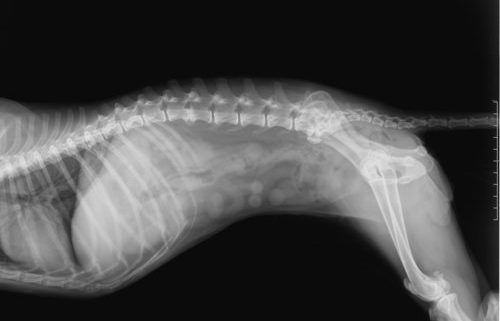By MEGAN TREMELLING, DVM, LVS
To some people, leaving your dog at the veterinary hospital for any reason sounds harsh, like leaving a child at one of those ghastly orphanages in Dickens books. There’s no doubt that most dogs would rather be in their own homes, but we do our best to make them feel at home with us. So what are the accommodations really like at the hospital?
A comfortable bed is step one, and we have bedding in a variety of thickness and layering options. Some dogs want to have enough blankets to burrow under. Orthopedic mattresses are a great thing for older dogs whose joints get creaky. There are a few dogs that simply cannot tolerate being in a kennel at all, and though I strongly recommend teaching all dogs to accept a kennel for this reason, we have worked out ways to confine the kennel-phobic without them feeling trapped.
Many owners bring a blanket or article of clothing that smells like home. I think this is a great idea for a pet that is wary of novelty. Once a pet has settled in, of course, their own smell is on their bedding. Most dogs are quite willing to go back into their kennels after they’ve been out for tests or treatment; they recognize it as their own safe space.
Nobody wants to sit in bed all day, even if they’re sick, so all dogs are walked several times per day if their condition allows. There are a few small dogs that are trained to use pee pads, but even those are given the opportunity to take a little exercise. (Exception: When I had a 5lb puppy hospitalized overnight and it was -5°F, I did not take the little mite outside; she would have frozen solid.)
Boredom can be a problem even with pets that are ill enough to be hospitalized. Visits from the owner help to pass the time. We keep a supply of stuffed animals around, carefully chosen for safe construction, and provide them to any patient who looks like they might want something to snuggle. If snuggling turns to chewing, unfortunately, the dog loses stuffy privileges, but we can resort to treat-stuffed Kongs if the patient’s condition permits.
Speaking of food, the phrase “hospital food” takes on a very different meaning when you’re talking about the animal hospital. It isn’t bland, boring, cafeteria-style stuff like you might see in an old-fashioned human hospital. Since many of our patients are feeling too sick to eat properly, we stock a variety of delicacies to tempt feeble appetites, along with several therapeutic diets for those that are ready to take more substantial meals.
Some of the dogs that visit us are really excited to see that there are other dogs on the premises. They would love to make friends with everyone. Unfortunately, for safety reasons, we can’t allow playtime among the patients, but if they want human friends, they’re in luck. Everyone who works at our clinic loves dogs madly. No matter how tired or grumpy we might be at the beginning of our shifts, the sweet faces of our patients help us to focus on the positive. It’s all we can do to get our work done when there are so many ears to be scratched and tummies to be rubbed. When things are slow at the office… well, there may or may not have been a few patients who spent part of their hospitalization sleeping on my lap in the office. I’m not saying.
Some people go a little bit overboard with the comforts they provide their pets at home. I’m pretty sure no dog ever suffered for lack of a $30,000 wedding chapel doghouse (for, of course, dog weddings), a Marie-Antoinette style brocade dog bed (complete with ostrich plumes), or a microvelvet Chesterfield dog sofa (with nailhead trim, naturally). The accommodations at the veterinary hospital will be a bit more spartan than that. (For one thing, everything we use is 100 percent machine washable). But, for all that, I think we do all right at helping our patients to feel at home.


